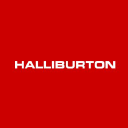/ factorpad.com / stocks / f31dvc.html
An ad-free and cookie-free website.
Our quantitative data points are meant to provide a high-level understanding of factors in equity risk models for Halliburton Co. Portfolio managers use these models to forecast risk, optimize portfolios and review performance.
We show how HAL stock compares to 2,000+ US-based stocks, and to peers in the Mining, Quarrying, and Oil and Gas Extraction sector and Support Activities for Oil and Gas Operations industry.
Please do not consider this data as investment advice. Data is downloaded from sources we deem reliable, but errors may occur.
 Founded in 1919, Halliburton is one of the world's largest providers of products and services to the energy industry. With more than 40,000 employees, representing 140 nationalities in more than 70 countries, the company helps its customers maximize value throughout the lifecycle of the reservoir - from locating hydrocarbons and managing geological data, to drilling and formation evaluation, well construction and completion, and optimizing production throughout the life of the asset.
Founded in 1919, Halliburton is one of the world's largest providers of products and services to the energy industry. With more than 40,000 employees, representing 140 nationalities in more than 70 countries, the company helps its customers maximize value throughout the lifecycle of the reservoir - from locating hydrocarbons and managing geological data, to drilling and formation evaluation, well construction and completion, and optimizing production throughout the life of the asset.
Many of the following risk metrics are standardized and transformed into quantitative factors in institutional-level risk models.
Rankings below represent percentiles from 1 to 100, with 1 being the lowest rating of risk.
Stocks with higher beta exhibit higher sensitivity to the ups and downs in the market. (↑↑)
Stocks with higher market capitalization often have lower risk. (↑↓)
Higher average daily dollar volume over the past 30 days implies lower liquidity risk. (↑↓)
Higher price momentum stocks, aka recent winners, equate to lower risk for many investors. (↑↓)
Style risk factors often include measures of profitability and payout levels.
Companies with higher earnings generally provide lower risk. (↑↓)
Companies with higher dividend yields, if sustaintable, are perceived to have lower risk. (↑↓)
/ factorpad.com / stocks / f31dvc.html
A newly-updated free resource. Connect and refer a friend today.